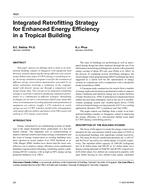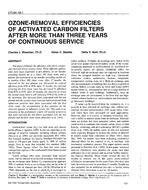Energy cost allocation systems apportion heating and/or cooling costs among the individual apartments in centrally metered buildings based on various measures of relative energy use of thermal comfort. The most commonly used systems measure one or more parameters related to the thermal output of the terminal element but do not measure enough parameters to provide a measurement of output that can be calibrated. They typically assume that heating or cooling output is linearly proportioned to a quantity, which may be a single temperature, a difference between two temperatures, or an average of two temperatures. Assesses how well various simple linear models approximate the true output of fan-coil units under various ranges of application conditions. Few of the simple models perform well over a wide range of application conditions but quite a number perform well over certain limited ranges. These more limited ranges of conditions are found in many buildings because of heating, ventilating, and air-conditioning (HVAC) system control strategies. In other buildings, it is possible to correct for the variation in some parameters, such as fan speed, and thus effectively reduce the range of conditions that must be captured by the model.
KEYWORDS: calculating, energy, costs, energy consumption, fan coil units, output, temperature, measuring, models, buildings, accuracy, fans, speed
Citation: ASHRAE Trans. 1994, Vol.100, Part 2, Paper number 3798, 148-164, 4 figs., 8 tabs., refs.
Product Details
- Published:
- 1994
- File Size:
- 1 file , 2.2 MB
- Product Code(s):
- D-17384


